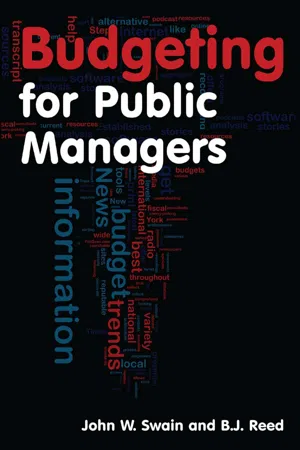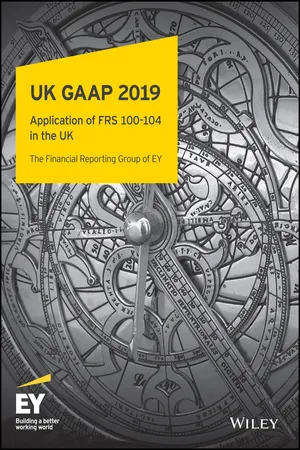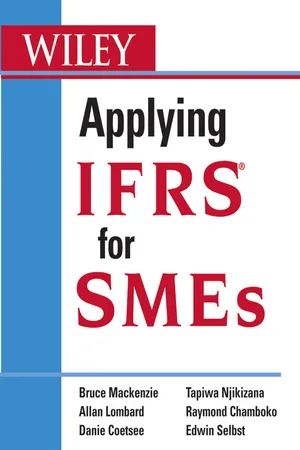Business
Revenue
Revenue refers to the income generated from the sale of goods or services. It is a crucial metric for businesses, indicating their ability to generate income and sustain operations. Revenue is typically calculated by multiplying the price of goods or services by the quantity sold, and it is a key factor in determining a company's financial performance.
Written by Perlego with AI-assistance
Related key terms
6 Key excerpts on "Revenue"
- eBook - ePub
- Richard A. Lambert(Author)
- 2016(Publication Date)
- Wharton Digital Press(Publisher)
A third common benchmark is the budget. This comparison helps identify surprises, to decide whether forecasts need to be updated, and so on. Regardless of which benchmark is employed, it is useful to discover if the deviation from the benchmark is due to an event that is temporary (nonrecurring) or permanent (persistent). This is an important distinction because a large nonrecurring event is important for evaluating past performance and understanding what happened, but it is less important for looking forward and forecasting future costs and profits.Assessing Performance, Starting with Revenues
Revenue (or sales) is one of the most publicized and closely examined numbers in the financial statements. Firms often start their quarterly press releases by reporting the firms’ sales for the period, and only later do they mention earnings. Revenue is important because it is the end result of all the firm’s activities. The financing obtained, the resources acquired, and the goods and services produced are all designed to generate Revenue (hopefully enough to cover all of the associated costs). Revenue is more than “the top line” on an income statement; it is also an important determinant of what costs appear on the income statement; many costs are “matched” to the Revenue.Revenues (and expenses) can also be decomposed into their underlying drivers: namely, Revenue is sales price times sales volume, and expenses are input cost times the amount of goods or services used. For transactions denominated in foreign currencies, changes in the exchange rate will also impact how these transactions get translated into dollars. Is Revenue higher because we sold more products, because the price was higher, or because the exchange rate has changed? If Revenue growth is due to the last, we probably should not count on this same growth recurring next year. - eBook - ePub
- (Author)
- 2023(Publication Date)
- Wiley(Publisher)
1. IntroductionIncome statements and analytical measures derived from them, such as sales growth, operating margin, and earnings per share (EPS), are critical for equity and credit analysis. Investors analyze income statements to evaluate companies’ growth, profitability, and risks, and often use income statement figures in valuation. Corporate financial announcements frequently emphasize information reported in income statements, particularly earnings, more than information reported in the other financial statements.Learning Module Overview
- Revenue is recognized in the period it is earned, which may or may not be in the same period as the related cash collection.
-
An analyst should identify differences in companies’ Revenue recognition methods and adjust reported Revenue where possible to facilitate comparability. In cases in which the available information does not permit adjustment, an analyst can characterize the Revenue recognition as more or less conservative and thus qualitatively assess how differences in policies might affect financial ratios and judgments about profitability.
-
As of the beginning of 2018, Revenue recognition standards have converged across US GAAP and International Financial Reporting Standards (IFRS). The core principle of the converged standards is that Revenue should be recognized to “depict the transfer of promised goods or services to customers in an amount that reflects the consideration to which the entity expects to be entitled in an exchange for those goods or services.”
-
To achieve the core principle, the standard describes the application of five steps in recognizing Revenue. The standard also specifies the treatment of some related contract costs and disclosure requirements.
- eBook - ePub
- John W. Swain, B.J. Reed(Authors)
- 2014(Publication Date)
- Routledge(Publisher)
3Sources, Characteristics, and Structures of Public RevenuesRevenue is often lost in the discussion of public budgeting. Most managers in public organizations do not give much thought to Revenue; their focus is almost exclusively on expenditures. This is understandable because, for them, Revenue is a given that they need not worry about since it is largely outside their control.For upper-level executives, policy-makers, and elected officials, however, Revenue is central to the budget process. This is also true for managers and administrators whose budgets and Revenues, to a significant extent, are driven by producing products and services that generate dollars for their units or agencies.Revenues flow from several sources. Most Revenue collected by government comes from taxes, and most Revenue collected by nonprofit organizations comes from enterprise activities. The U.S. Census Bureau reports that 92 percent of federal dollars come from taxes if you include Social Security payroll taxes in that mix. For states the comparable figure is 75 percent, and for local governments it is 62 percent.Taxes are mostly structured along three major bases of measurement: income, consumption, and wealth. A variety of other taxes relate specifically to business activities. Income refers to all Revenue derived from activities of individuals or corporations and ranges from salaries and wages to rents, royalties, and dividends from equities. Income manifests itself with individual and corporate income taxes as well as federal payroll taxes. Consumption is linked to sales and value-added taxes. Property taxes, primarily taxes on homes and businesses, are the bases for most wealth tax Revenues. However, there are also taxes on inherited wealth and on the sale of investments such as stocks and bonds.Most other dollars flow from enterprise activities. These Revenues from “business-like” activities generate all of the Revenue for some nonprofit organizations and can create as much as 30 or 40 percent that a local government raises from its own sources, which are called own-source Revenues. These are often earmarked for specific purposes (e.g., roads, utilities, recreation). Enterprise activities are those where the cost of a service or product and the beneficiaries of those services or products can be identified. The beneficiaries also can be largely excluded from the certain benefits of those services or products. Those who use public municipal golf courses or those who go to concerts provided by a local nonprofit opera company can be charged a fee for use of those services and the benefits can be identified. Almost all governments and nonprofits have some form of Revenue that is generated from such activities. - eBook - ePub
UK GAAP 2019
Generally Accepted Accounting Practice under UK and Irish GAAP
- (Author)
- 2019(Publication Date)
- Wiley(Publisher)
An entity is acting as a principal when it has exposure to the significant risks and rewards associated with the sale of goods or the rendering of services. Features that indicate that an entity is acting as a principal include: (a)the entity has the primary responsibility for providing the goods or services to the customer or for fulfilling the order, for example by being responsible for the acceptability of the products or services ordered or purchased by the customer; (b)the entity has inventory risk before or after the customer order, during shipping or on return; (c)the entity has latitude in establishing prices, either directly or indirectly, for example by providing additional goods or services; and (d)the entity bears the customer's credit risk for the amount receivable from the customer. Revenue The gross inflow of economic benefits during the period arising in the course of the ordinary activities of an entity when those inflows result in increases in equity, other than increases relating to contributions from equity participants.This section focuses on the requirements of Section 23 and also refers to the Appendix to Section 23 which provides guidance for applying the requirements in recognising Revenue. The Appendix, however, does not form part of Section 23.3.2Measurement of Revenue
Revenue within the scope of Section 23 shall only be recognised if it meets, at a minimum, the following two criteria: [FRS 102.23.10(c)-(d), 14(a)-(b), 28]- Revenue can be measured reliably; and
- it is probable that the economic benefits associated with the transaction will flow to the entity.
‘Probable’ is defined as ‘more likely than not’. [FRS 102 Appendix I]. The consideration receivable may not be regarded to be probable until the actual consideration is received or when a condition is met that removes any uncertainty.In addition to the above criteria, there are other conditions that need to be met for the recognition of Revenue from the sale of goods and the rendering of services. [FRS 102.23.10, 14]. These are further discussed below at 3.4 and 3.5 - eBook - ePub
- Bruce Mackenzie, Allan Lombard, Danie Coetsee, Tapiwa Njikizana, Raymond Chamboko(Authors)
- 2010(Publication Date)
- Wiley(Publisher)
22 Revenue Scope Definitions Measurement Identification of the Revenue Transaction Sale of Goods Rendering of Services Construction Contracts Percentage of Completion Method Interest, Royalties, and Dividends Disclosure Differences between IFRS for SMEs and Full IFRS Differences from Exposure Draft Summary SCOPE This chapter deals with the recognition, measurement, and disclosure of Revenue from:- The sale of goods
- The rendering of services
- Construction contracts in which the entity is the contractor
- The use by others of entity assets yielding interest, royalties, or dividends
- Lease agreements (refer to Chapter 18 )
- Dividends and other income arising from investments that are accounted for using the equity method (refer to Chapters 9 and 10 )
- Changes in the fair value of financial assets and liabilities or their disposal (refer to Chapter 17 )
- Changes in the fair value of investment property (refer to Chapter 11 )
- Initial recognition of biological assets and agricultural produce, as well as changes in the fair value of biological assets related to agricultural activity (refer to Chapter 29 )
- Revenue is defined as the gross inflow of economic benefits during the course of the ordinary activities of an entity, when those inflows result in increases in equity other than increases relating to contributions from equity participants. Note: Increases relating to contributions from equity participants are dealt with in Chapter 16.
- Construction contracts are defined as contracts specifically negotiated for the construction of an asset, or a combination of assets, that are closely inter-related or inter-dependent in terms of their design, technology and function, or their ultimate purpose or use.
Revenue is measured at the fair value of the consideration received or receivable by the entity. Fair value is calculated by taking into account the amount of any trade discounts, prompt settlement discounts, and volume rebates allowed by the entity. These are deducted when measuring the Revenue from a transaction. - eBook - ePub
Interpretation and Application of UK GAAP
For Accounting Periods Commencing On or After 1 January 2015
- Steven Collings(Author)
- 2015(Publication Date)
- Wiley(Publisher)
Chapter 8 Revenue Recognition- Introduction
- Deferred Payment
- Specific Considerations
- Exchanges and Sales of Goods
- Rendering of Services
- Interest, Royalties and Dividends
- HM Revenue and Customs Requirements
- Disclosure Requirements
Introduction
The issue concerning Revenue recognition has been somewhat controversial over the years. Revenue is the headline figure in a company's financial statements and the controversy has largely surrounded some entities attempting to delay Revenue recognition, or conversely accelerate Revenue recognition, purely to engineer the financial statements to achieve a desired outcome (usually, though not exclusively, to manipulate profit for the purposes of taxation). Clearly such acts fail to achieve both relevance and reliability, which are notable characteristics that financial statements must contain according to the Concepts and Pervasive Principles. Manipulation of the Revenue figure can also lead to enquiries by HM Revenue and Customs (HMRC) who may choose to impose penalties and interest on companies where it can be proved that deliberate manipulation of the Revenue figure has taken place.Regardless of any deliberate attempts to falsify, Revenue itself has become more complex in recent years with arrangements such as service contracts tied in with purchase price. Clear guidance from accounting standards must therefore be assimilated and followed.Revenue recognition is dealt with in Section 23 Revenue of FRS 102. This particular section is a very comprehensive section with appendices attached to it, which aim to help users apply the section correctly. It is possible, in the future, that the section may be amended in order to reflect the new requirements based on the standard issued by the International Accounting Standards Board (IASB) in collaboration with the US standard-setters (the Financial Accounting Standards Board (FASB)) in the form of IFRS 15 Revenue from Contracts with Customers
Index pages curate the most relevant extracts from our library of academic textbooks. They’ve been created using an in-house natural language model (NLM), each adding context and meaning to key research topics.





